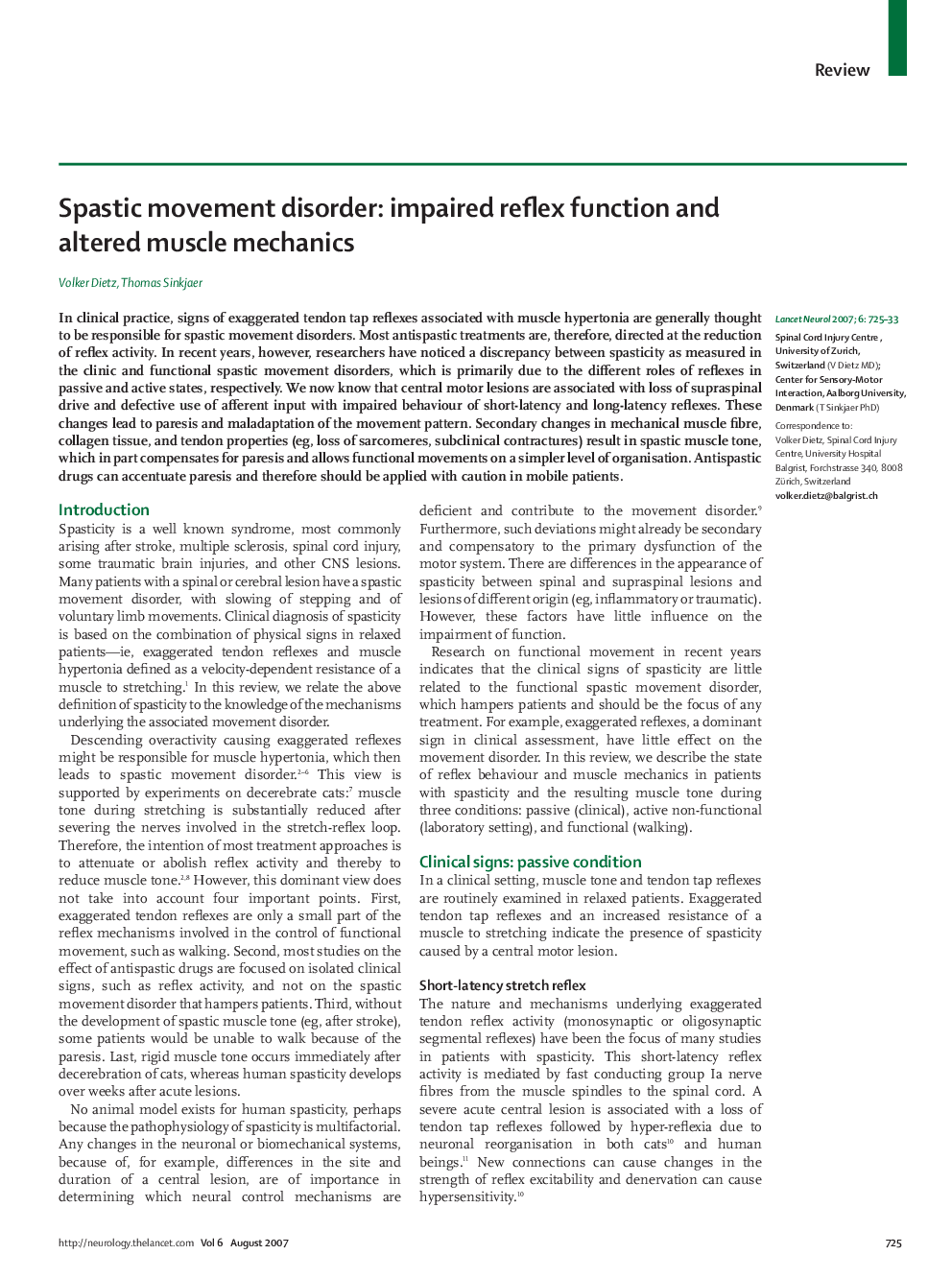| Article ID | Journal | Published Year | Pages | File Type |
|---|---|---|---|---|
| 3067819 | The Lancet Neurology | 2007 | 9 Pages |
SummaryIn clinical practice, signs of exaggerated tendon tap reflexes associated with muscle hypertonia are generally thought to be responsible for spastic movement disorders. Most antispastic treatments are, therefore, directed at the reduction of reflex activity. In recent years, however, researchers have noticed a discrepancy between spasticity as measured in the clinic and functional spastic movement disorders, which is primarily due to the different roles of reflexes in passive and active states, respectively. We now know that central motor lesions are associated with loss of supraspinal drive and defective use of afferent input with impaired behaviour of short-latency and long-latency reflexes. These changes lead to paresis and maladaptation of the movement pattern. Secondary changes in mechanical muscle fibre, collagen tissue, and tendon properties (eg, loss of sarcomeres, subclinical contractures) result in spastic muscle tone, which in part compensates for paresis and allows functional movements on a simpler level of organisation. Antispastic drugs can accentuate paresis and therefore should be applied with caution in mobile patients.
